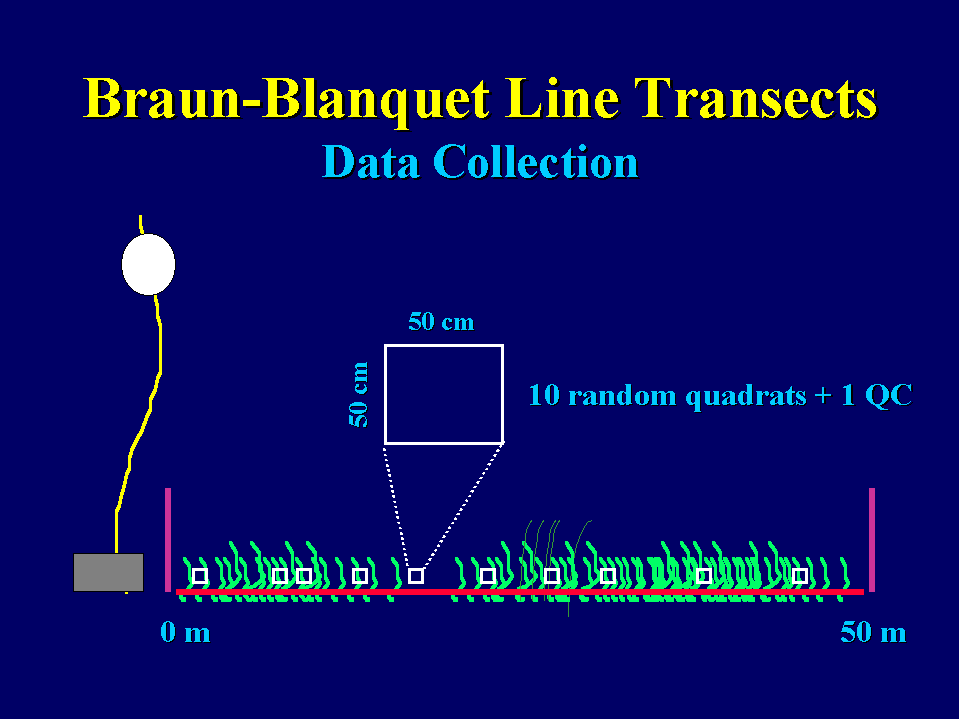Braun-Blanquet Survey Methods
A rapid, visual assessment technique developed early in the 20th century by the plant sociologist Braun-Blanquet was used to assess abundance of seagrass and macroalgae. This method is very quick, requiring only minutes at each sampling site; yet it is robust and highly repeatable, thereby minimizing among-observer differences. At each permanent seagrass monitoring site, a 50 m long transect was established at the beginning of the study period by driving steel rods into the substratum at both ends of the transect. At each mapping site, a 50 m transect was set up by extending a meter tape along the bottom in an up-current direction. Ten quadrats (0.25 m2) were placed along each transect at pre-determined random distances from one of the marker rods. A new set of random numbers were chosen before each visit to a site. Each quadrat was examined by divers using SCUBA. All seagrass species occurring in the quadrat were listed, and a score based on the cover of the species in that quadrat was assigned (Table 1). Cover, as defined for this purpose, is the fraction of the total quadrat area that is obscured by a particular species when viewed from directly above.

From the raw observations of cover in each quadrat at a site, three statistics were computed for each species: density, abundance and frequency. Density was calculated as Di = SUM(Sij/n); where Di = Density of species i; j = quadrat number from 1 to n, the total number of quadrats sampled at a site, and Sij = the Braun-Blanquet score for species i in quadrat j. For any species, D can range between 0 and 5, the maximum Braun-Blanquet score. At a site, however, the sum of all taxa D values can be greater than 5, because of the relatively broad cover ranges for each Braun-Blanquet value and the fact that seagrass canopies are three dimensional. It should also be noted that a species may be observed at a site by the sample collector, but unless the species falls within one of the randomly-placed observation quadrats, the species receives a D = 0. Abundance was calculated as Ai = SUM(Sij/Ni) , where Ni is the number of quadrats at a site in which species i was present. For any species, A can range between 0 and 5, the maximum Braun-Blanquet score (note Di < Ai). Frequency was calculated as Fi = Ni/n; 0 < Fi < 1. In addition to species-specific measures, seagrass species richness S was calculated for each site by summing the number of seagrass species for which D > 0.
Table 1. Braun-Blanquet Density Scores
| Score | Cover |
| 0 | Taxa absent from quadrat |
| 0.1 | Taxa represented by a solitary shoot, <5% cover |
| 0.5 | Taxa represented by a few (<5) shoots, >5% cover |
| 1 | Taxa represented by many (>5) shoots, <5% cover |
| 2 | Taxa represented by many (>5) shoots, 5 - 25% cover |
| 3 | Taxa represented by many (>5) shoots, 25 - 50% cover |
| 4 | Taxa represented by many (>5) shoots, 50 - 75% cover |
| 5 | Taxa represented by many (>5) shoots, 75 - 100% cover |